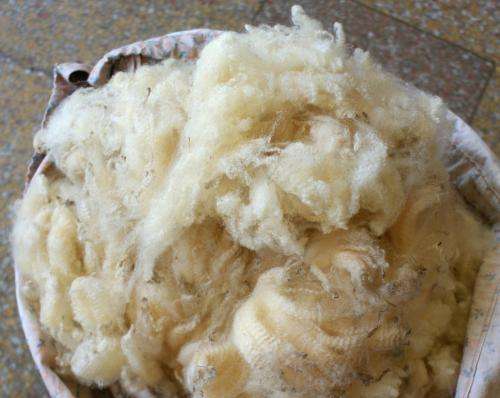Wool quality reduced with sheep weight loss

A new study into wool production has found that seasonal weight loss can cause reduced wearability and appearance retention.
The study, involving 24 Australian Merino sheep, found the 12 that experienced experimentally induced weight-loss had significant increases in KAP13.1 and KAP6 proteins that cause reduced wearability and appearance retention in wool fibres.
Co-author Dr Andre Almeida believes their findings will cause wool producers to rethink their sheep selection programs.
"The fact that the most significant wool production players in the world (namely Australia but also the Iberian Peninsula) are located in drought prone areas, made this issue extremely interesting," he says.
"[Seasonal weight loss] causes important changes in the wool structure and a negative impact on wool quality and technological properties.
"This is important information for farmers and industry that can do a better balance of their supplementation programs."
Australia constantly undergoes extreme seasonal fluctuation, with October to December being a severe dry period that affects nutrition and pasture.
This has resulted in many wool producers turning to supplementation to maintain wool production; however it is an expensive and difficult process that is unavailable in resource-limited countries.
The study, featuring WA scientists Professor John Milton, Dr Chris Oldham, Dr Tim Scanlon and Tanya Kilminster, is the first to analyse the effects of seasonal weight loss at a proteomic level.
"We realised that [there was] no information available on the effect of weight loss on wool production and, above all, wool quality," Dr Almeida says.
The findings add to prior knowledge that seasonal weight loss can cause a decrease in wool fibre diameter.
Finer wool is favoured in the wool industry as it provides a reduced prickle sensation but is expensive for customers due to its lower production output per sheep.
"Ultimately this information can, on the long run, be used in [sheep] selection programs in order to obtain animals that are more capable of coping with the most serious drawback to animal production in the tropics and subtropics seasonal weight loss," says Dr Almeida.
Dr Almeida and his team are also examining different breeds of sheep to understand how each breed copes with seasonal weight loss in an attempt to understand key metabolic pathways and characteristics.
Provided by Science Network WA



















